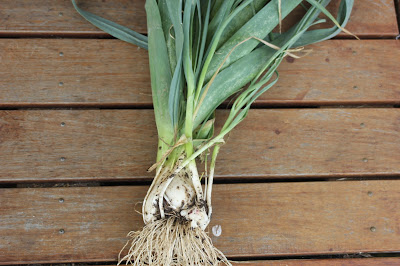I have always wanted someone to do a comparison of the different varieties of thyme, but the best I can find are some general words or exaggerated hype about just one variety, but no comparisons. So I decided to write a quick comparison of some varieties I have grown and take some pictures to compare them.
Before you read this please note the leaf size will vary on each plant depending on growing conditions, the photos will only give you a general comparison of plants grown under similar conditions. All of the below varieties have survived for me through many harsh frosts, snow, and hail.
Each year I tend to cut the plants down pretty hard in spring, this encourages new growth and the trimmings can be planted and will usually grow new plants if watered a little. Like many other leaf herbs, frequent harvests encourage it to produce and if left unharvested they can get a bit woody and unproductive.
 |
| All were same sized cuttings planted on the same day: Variegated lemon thyme, Orange peel thyme, Tabor thyme, Jekka's thyme |
Comparison of Thyme varieties:
Regular
thyme (aka Garden Thyme Thymus vulgaris) is a good edible herb, not surprisingly it
smells and tastes of thyme. The leaves are tiny and green. It is meant
to be drought hardy and frost hardy. For some strange reason
I have trouble growing it. Random things happen that can’t be the
fault of the variety such as my kids pull it up or the pot gets knocked over and one of the kids kicks it under a shrub where I can't find it. It just hasn’t had
a chance to thrive for me. It is not included in the comparison photo as it looks tiny in its pot. It is simple to strip the tiny leaves from
the twigs.
Silvery posy thyme (Thymus sp) is a lovely edible thyme. The leaves are the same size as regular thyme but are variegated and interesting. We grew it for years, it smells and tastes and is used just like regular thyme but is far prettier. Mine was vigorous and strong, unfortunately being variegated means it does not cope with hot dry weather as well as all green varieties can. After growing it in an arid climate with one too many weeks in a row where day time temperatures exceeded 40 Celsius it died, and I didn’t replace it. Now that we have moved near Canberra I should get another one as it grows well here and I miss it.
 |
| Thyme leaves back and front, from left to right: Garden thyme, Lemon thyme, Variegated lemon thyme, orange peel thyme, Jekka's thyme, Tabor thyme |
 |
| Thyme comparison from left to right: lemon thyme (this plant is older than the rest), variegated lemon thyme, orange peel thyme, Tabor thyme, Jekka's thyme |
 |
| Left to right: Tabor Thyme, Variegated Lemon Thyme, Jekka's Thyme |
 |
| Left to right: Garden thyme, Lemon thyme, Variegated lemon thyme, orange peel thyme |
 |
| Left to right: Orange peel thyme, Jekka's thyme, Tabor thyme |
 |
| Tabor thyme on left, Jekka's thyme in right |
Tabor thyme (Thymus sp) is another strong growing, vigorous edible herb. It has the largest leaves I have seen on a thyme plant and is the fastest growing thyme I have grown. It has a strong thyme smell and taste. When young it is difficult to strip large leaves from soft stems, as the plant gets older the stems get stronger and this becomes simpler. Tabor thyme is not well suited to hot arid climates and suffers a bit due to its larger soft leaves.
Where to buy culinary thyme plants
Most garden shops tend to sell thyme, sometimes they have different varieties. I really should take some cuttings and sell some of the thyme varieties that I have through my for sale page as some of the thyme varieties I grow were difficult to come by but are really rather good.











